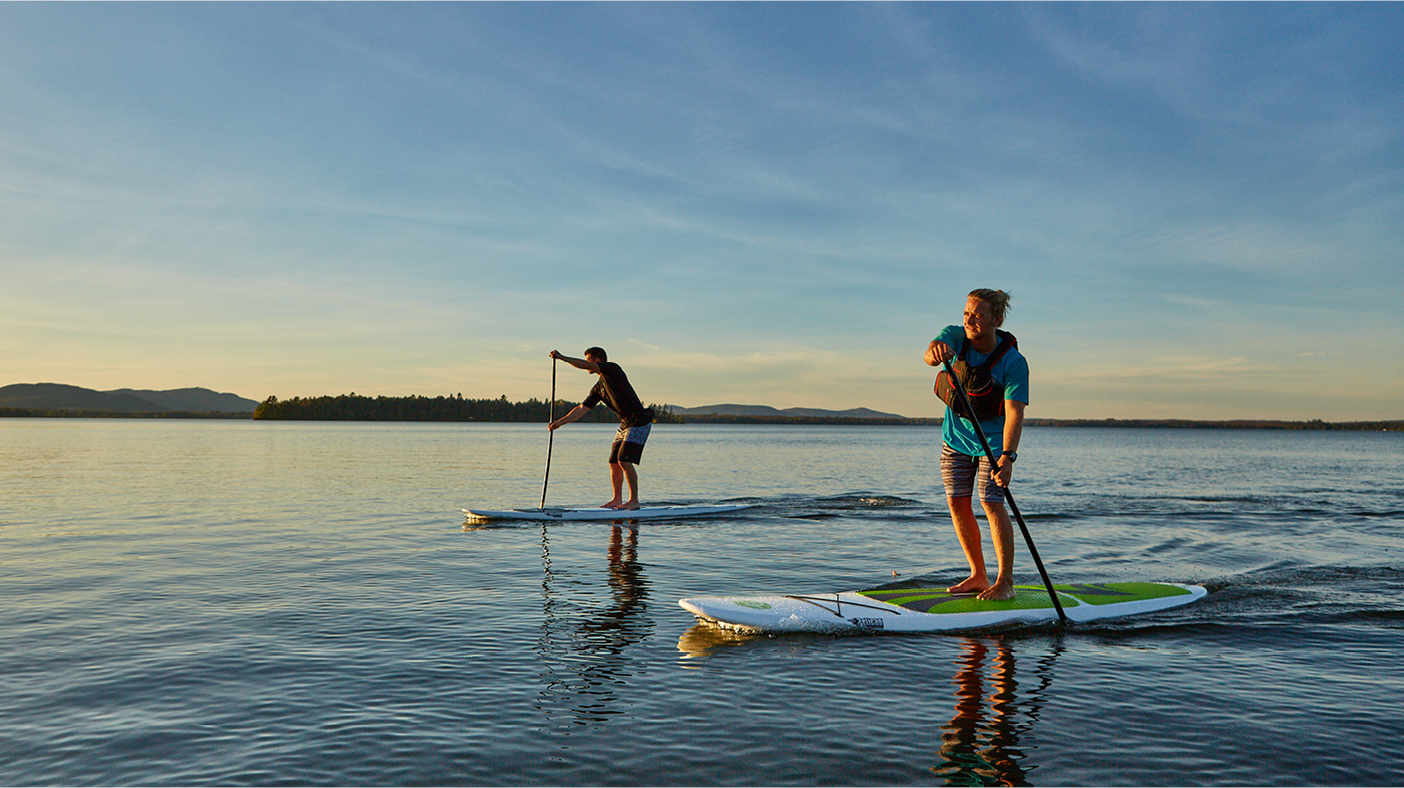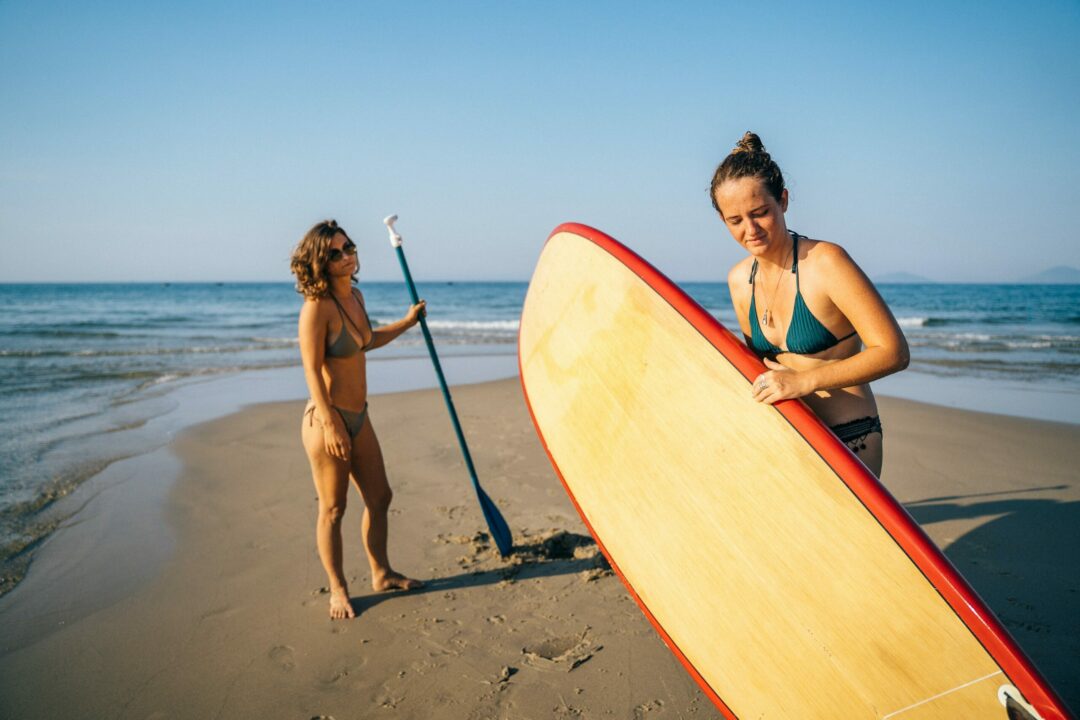3 Great Backpacks for Your Trip
Outdoor Activities | August 1, 2025
SAIL
April 11, 2022

The popularity of stand-up paddle boards (SUP) is growing, much to the delight of water sports enthusiasts and seekers of summer relaxation. Several models are available on the market, including solid, and inflatable boards. Inflatable or Hard SUP? Here’s an overview to guide you in choosing a paddle board (SUP) suited to your needs. Also, make sure you have the essential accessories for your paddle board (SUP) outings.
Read our Paddleboarding Guide to discover a ton of tips and tricks about this relaxing and fun activity that will allow you to enjoy the summer sun.
In this article, you will learn more about:
| Comparison | Pros | Cons |
|---|---|---|
| Hard Paddle Board |
|
|
| Inflatable Paddle Board |
|
|

Inflatable paddle boards are practical and compact. They don’t require too much storage space, which is a plus if you live in a smaller house, condo, or apartment; a closet is all you need to store it.
Much lighter than its hard counterpart, it’s easy to transport in any car, taxi, bus, or any other method of your choice, since all you need to do is roll it up in its carry bag and tuck it away. Added bonus: you don’t need to get it onto the top of your car, nor do you need electricity, as it may be inflated with a manual pump.
Finally, despite what you might think, inflatable boards last quite a long time, as its thick vinyl and multiple air chambers allow it to withstand impacts, especially if you’re paddling over shallow waters. Repairing a fractured fiberglass paddle board is a bit more difficult and more expensive, should a collision with a rock – or other object – occur.

Hard stand up paddle boards (SUP) are more difficult to store once you’re done using them, as they can be up to 13 ft long (396 cm). This type of board requires a spacious room with a high ceiling for storage, such as a basement or garage (or a horizontal wall mount!).
These boards are made of plastic and/or fiberglass, which automatically means that they will be heavier (approx. 40 lb / 18 kg). Given its large size, a hard board needs to be transported by car, and well-attached on a car roof rack.
Shorter boards are easier to maneuver. Depending on their weight, they float well and offer good balance. The longer the board, the faster its speed.
Once you’ve decided what activity you want to do with your paddle board (SUP), here are some important things to consider when shopping for the right one for you.
| Activity | Length | Width | Board nose |
|---|---|---|---|
| SURFING OR BOARD FOR CHILDREN |
Less than 10 ft (less than 305 cm) |
Variable | Pointed nose for surfing, and round nose for children |
| RECREATIONAL PADDLING AND CRUISING |
10 to 11.5 ft (305 to 350 cm) |
30 to 32 inches (76 to 81 cm) |
Round nose |
| YOGA | 10 to 11.5 ft (305 to 350 cm) |
34 to 36 inches (86 to 91 cm) |
Round nose |
| RACING AND TOURING |
12 to 13 ft (365 to 396 cm) |
Less than 30 inches (less than 76 cm) |
Pointed nose for better precision and navigation |
Note: Paddle boards are generally suitable for all weights, but people of a heavier weight may prefer a wider board, which offers more stability.
Raise one arm above your head and stand the paddle up in front of you. The handle should reach the height of your wrist.
Choose an extensible telescoping paddle if several people will be using the same one. It will fit into a backpack and doesn’t require a large storage space.
Otherwise, select a one-piece paddle for racing or touring.
Gear up with a telescoping paddle if you are planning on using it for yoga.
Opt for a fiberglass and carbon fiber paddle if you plan on doing more touring, as it tends to offer better performance.